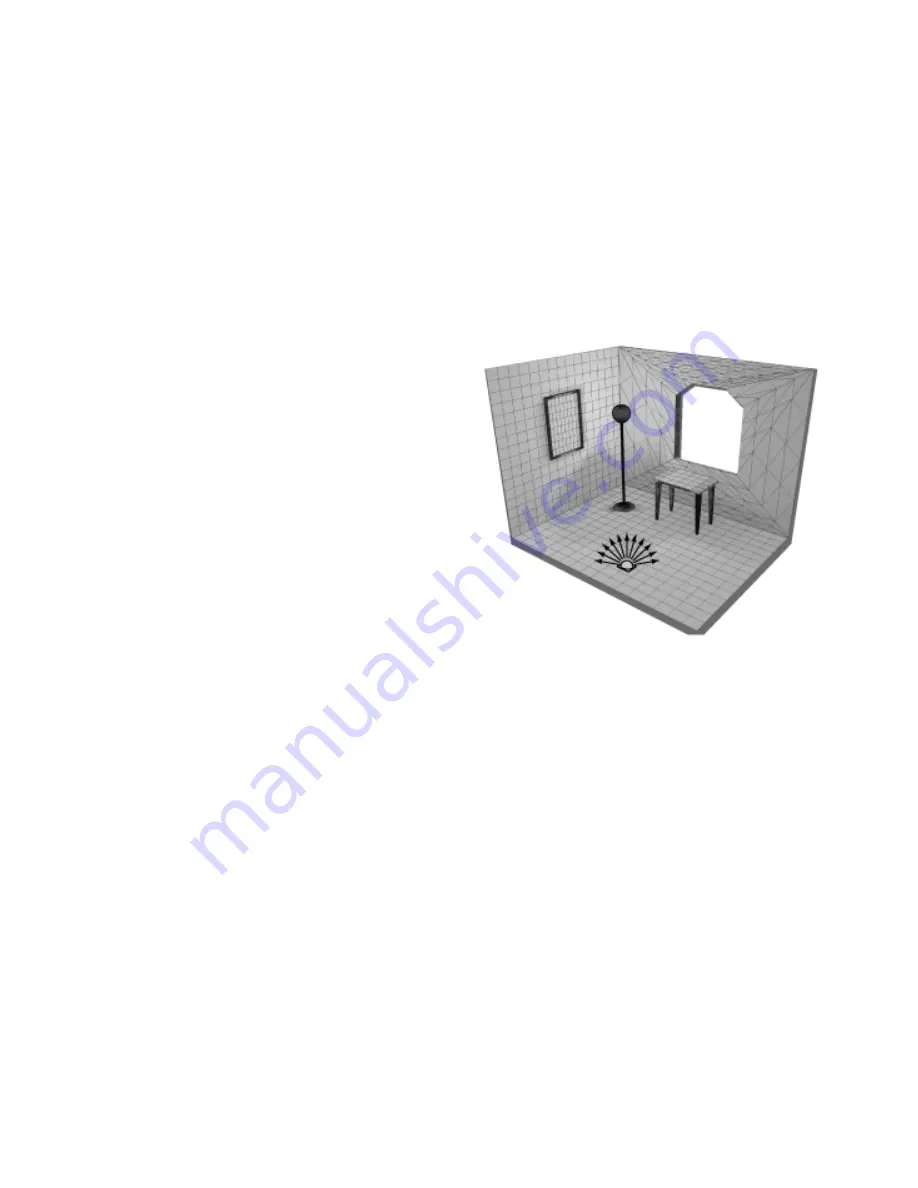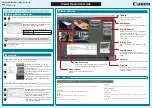
Computer Graphics Rendering
5
❚❘❘
Traditional ray tracing techniques often refer to this
indirect illumination as
ambient light.
With this
technique, an arbitrary value that has no correlation
to the physical phenomena of indirect illumination
and that is constant throughout space is simply
added. This often causes ray traced images to appear
very flat. This is particularly true for architectural
environments, which typically contain mostly
diffuse surfaces.
Radiosity
To address some of the shortcomings of the ray
tracing algorithm, researchers began investigating
alternative techniques for calculating global
illumination.
In the early 1960s, thermal engineers developed
methods for simulating the radiative heat transfer
between surfaces. Their goal was to determine how
their designs would perform in various applications
such as furnaces and engines. In the mid-1980s,
computer graphics researchers began investigating
the application of these techniques for simulating
light propagation.
Radiosity
, as this technique is called in the computer
graphics world, differs fundamentally from ray
tracing. Rather than determining the color for each
pixel on a screen, radiosity calculates the intensity
for discrete points in the environment.
Radiosity accomplishes this by first dividing the
original surfaces into a mesh of smaller surfaces
known as
elements
. The radiosity process calculates
the amount of light distributed from each mesh
element to every other mesh element. It then stores
the final radiosity values for each element of the
mesh.
When this light distribution has been calculated,
specific views of the environment can be rapidly
displayed on the screen (often in real time) using
simple hardware-assisted scan-line techniques. This
property is often referred to as
view independence,
because the light distribution is precalculated for the
whole environment and does not have to be recalcu-
lated for each specific view. Ray tracing, on the other
hand, is known as a
view-dependent
algorithm,
because the lighting has to be recalculated for each
view.
Early versions of the radiosity algorithm had to
completely calculate the distribution of the light
among all the mesh elements before displaying any
useful results on the screen. Even though the end
result was view independent, the preprocessing took
considerable time. In 1988, this preprocessing
portion of the radiosity algorithm was reformulated.
The new technique, referred to as
progressive refine-
ment radiosity,
allows users to obtain immediate
visual results, which progressively improve in accu-
racy and visual quality.
The progressive refinement radiosity algorithm
used in Lightscape works in the following way:
1.
The surfaces are meshed into a set of relatively
large elements. The initial elements can be subdivid-
ed automatically into smaller elements in areas
where a significant intensity difference is detected
Radiosity
Содержание LIGHTSCAPE
Страница 1: ...SULO 4 31 93 36034333308355 LJKWVFDSH...
Страница 18: ...NOTES 10...
Страница 110: ...NOTES 102...
Страница 136: ...NOTES 128...
Страница 166: ...NOTES 158...
Страница 176: ...NOTES 168...
Страница 202: ...NOTES 194...
Страница 210: ...NOTES 202...
Страница 248: ...NOTES 240...
Страница 294: ...NOTES 286...
Страница 308: ...NOTES 300...
Страница 316: ...NOTES 308...
Страница 324: ...NOTES 316...
Страница 342: ...Glossary 334 Lightscape...
Страница 360: ...Index ix 352 Lightscape...
Страница 362: ......














































